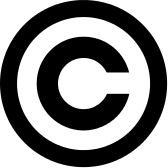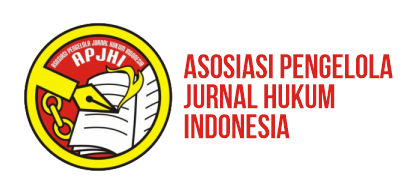“Nalar Fenomenologi”; Mahkamah Konstitusi dalam Pusaran Kekuasaan dan Bahaya Krisis Weltanschauung
DOI:
https://doi.org/10.31078/jk1121Keywords:
Constitutional Court, Constitutional Reform, Structural Political Hegemony, Legitimacy of PowerAbstract
Constitutional Court who was born as one of the reforms agenda in the continued process of judicial power itself into an independent institution that is at the forefront in guarding the constitution. As an agency that handles matters constitutional, posisiny is clearly confronted with the vortex power of the oligarchs who seemed never be separated from the Indonesian constitutional journey. Struggle not only with critics but also systemic critique of scientific laws, which the agency is expected to not thick with legalistic positivism absolutizing the workings of the law and the constitution. Besides, what is the most feared and to be consequences if the judges are in crisis Weltanschauung. This is where the need to check the perspective that not only cast a normative critique, but also reflective criticism, as an affirmation of the political and dismantle structural hegemony explore perspectives on the human being as the central value of justice.
References
A.M. Fatwa, 2009, Potret Konstitusi Pasca Amandemen UUD 1945, Jakarta: Kompas Media Nusantara.
Aharon Barak, 2006, The Judge in a Democracy, Princeton University Press.
Benny K. Harman Hendardi, 1991, Konstitusionalisme Peran DPR Judicial Review, Jakarta: Yayasan LBH Indonesia & JARIM.
Fatkhurohman, Dian Aminudin, dan Sirajuddin, 2004, Memahami Mahkamah Konstitusi di Indonesia, Bandung: PT. Citra Aditya Bakti.
Frans H. Winarta, 2009, Suara Rakyat Hukum Tertinggi, Jakarta: PT. Kompas Media Nusantara.
Jimly Asshidique, 2008, Menuju Negara Hukum Yang Demokratis, Jakarta: Sekertariat jendral dan kepaniteraan Mahkamah Konstitusi.
Lusia Indrastuti dan Susanto Polamolo, 2013, Hukum Tata Negara dan Reformasi Konstitusi Indonsia, Yogyakarta: Total Media.
Mahfud MD, 2001, Politik Hukum di Indonesia, Pustaka LP3ES.
Mohtar Mas’oed, 2003, Negara Kapital dan Demokrasi, Pustaka Pelajar.
Moh. Kusnardi dan Harmaily Ibrahim, 1983, Pengantar Hukum Tata Negara, Sinar Bakti.
Munir Fuady, 2009, Teori Negara Modern (Rechstaat), PT refika aditama.
Munir Fuady, 2003, Aliran Hukum Kritis; Paradigma Ketidak berdayaan Hukum, Bandung: Citra Aditya Bakti.
Puguh Windrawan, 2012, Pergeseran Kekuasaan Tipologi Ketiga;Fenomena Kekuasaan Ke arah Constitutional Heavy, Jurnal Konstitusi, Volume 9 Nomor 4, Desember.
Sabine, George H., 1961. A History of Political Theory. Third Edition. New York – Chicago – San Fransisco – Toronto – London: Holt, Rinehart And Wiston.
Schmandt, Henry J., 2002, Filsafat Politik;Kajian Historis dari Zaman Yunani sampai Zaman Modern, Yogyakarta: Pustaka Pelajar.
Soetandyo Wignjosoebroto. 2002. Hukum: Paradigma, Metode, dan Dinamika Masalahnya. Jakarta: ELSAM dan HUMA.
Sorensen, Georg, 2003, Demokrasi dan Demokratisasi, - proses da prospeknya dalam sebuah dunia yang sedang berubah, Yogyakarta: Pustaka Pelajar.
Samsul Wahidin, 2007, Dimensi Kekuasaan Negara Indonesia, Yogyakarta: Pustaka Pelajar.
Titik Triwulan Tutik, S.H, M.H. 2010. Konstruksi Hukum Tata Negara Indonesia pasca Amandemen UUD 1945.
Wheare, K.C., 1975, Modern Konstitution, London; Oxford University Press.
Downloads
Published
How to Cite
Issue
Section
License
Authors who publish with this journal agree to the following terms:
- Copyright of the published articles will be transferred to the journal as the publisher of the manuscripts. Therefore, the author confirms that the copyright has been managed by the publisher.
- The publisher of Jurnal Konstitusi is The Registrar and Secretariat General of the Constitutional Court of the Republic of Indonesia.
- The copyright follows Creative Commons Attribution-NonCommercial-ShareAlike 4.0 International License: This license allows reusers to distribute, remix, adapt, and build upon the material in any medium or format for noncommercial purposes only, and only so long as attribution is given to the creator. If you remix, adapt, or build upon the material, you must license the modified material under identical terms.

















